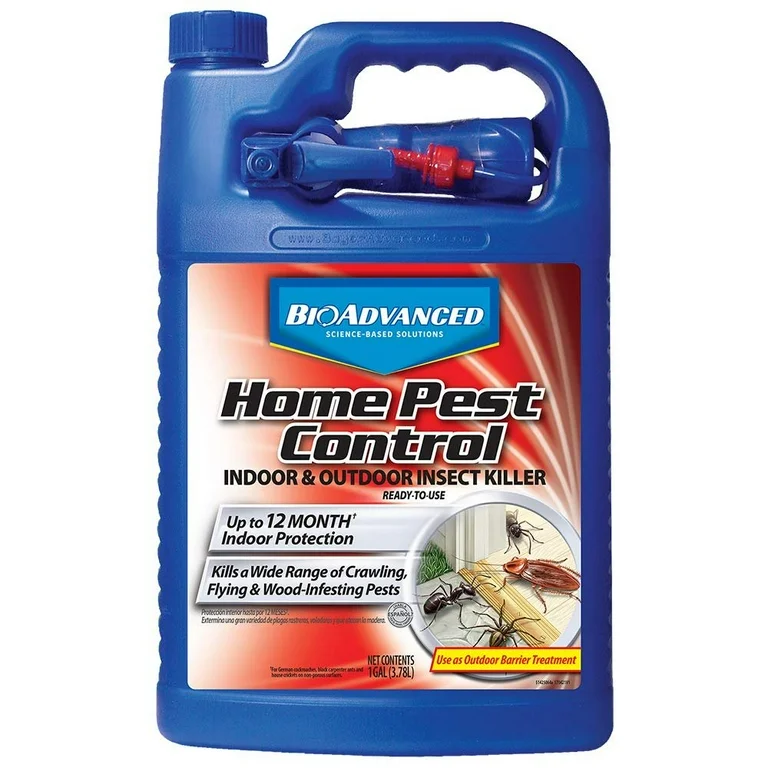A1 Pest Control Charlotte NC Bed Bugs - Specialist Elimination Services
A1 Pest Control Charlotte NC Bed Bugs - Specialist Elimination Services
Blog Article
Bed Insect Treatment Failure: Contrasting Chemical Vs. Non-Chemical Solutions
In the world of pest control, especially when managing the relentless issue of bed pests, the option between chemical and non-chemical treatment services can be a pivotal one. Both strategies use distinct benefits and drawbacks, affecting variables such as effectiveness, safety factors to consider, and total price. By checking out the nuanced details of each technique, a clearer understanding of which course to seek in attending to a bed insect infestation can be attained.
Efficiency of Chemical Therapies
Chemical treatments for bed bug problems have been widely acknowledged for their fast and potent efficacy in eradicating these pests. When considering the performance of chemical therapies, it is vital to understand that they can provide a detailed and quick service to a bed insect issue. Professional exterminators frequently rely upon insecticides to target bed pests at various stages of their life process, consisting of fairies, grownups, and eggs. These chemicals commonly function by interrupting the bed bugs' worried system, causing paralysis and eventual death.
In addition, chemical therapies have the benefit of using residual impacts, implying that they can continue to remove bed insects also after the preliminary application. This residual activity is specifically useful in combating any kind of possible re-infestations. In addition, the quick action of chemical treatments can bring alleviation to people encountering severe bed insect invasions, enabling them to regain control of their home quickly.
Safety Interest In Chemical Solutions
One essential aspect that requires cautious factor to consider when making use of chemical remedies for bed pest treatment is making certain the safety of residents and the environment. Direct exposure to specific chemicals made use of in bed insect therapies can lead to respiratory concerns, skin irritation, or various other adverse reactions, especially in people with pre-existing conditions or level of sensitivities.
Moreover, the ecological impact of chemical options is another significant factor to consider. Some pesticides utilized in bed insect treatments may be dangerous to useful bugs, wild animals, and communities if they seep into the dirt or water supply. It is important to utilize chemical therapies carefully, adhering to safety and security guidelines, and considering less poisonous choices to alleviate these threats and ensure the risk-free and reliable administration of bed insect infestations.
Benefits of Non-Chemical Strategies
Considering the possible security problems and ecological effect related to chemical options for bed insect treatment, discovering non-chemical strategies provides a promising alternative with numerous unique advantages. Non-chemical methods use a much safer option for families, especially those with children, family pets, or people delicate to severe chemicals. These approaches get rid of the dangers of exposure to toxic substances, decreasing the potential for negative wellness impacts. Furthermore, non-chemical site web therapies are eco friendly, as they do not add to air or water contamination, making them a lasting option for pest control.
Furthermore, non-chemical services can be reliable in targeting bed bugs, consisting of hard-to-reach locations where chemical therapies might not pass through. Methods such as warmth treatment, vacuuming, vapor cleaning, and bed mattress coverings provide comprehensive elimination without the use of damaging chemicals. Additionally, non-chemical techniques can be much less disruptive, needing marginal prep work and enabling for quicker reentry into treated locations. Overall, selecting non-chemical bed bug therapy techniques not just prioritizes safety and environmental management yet likewise makes certain detailed and efficient bug control.
Limitations of Non-Chemical Treatments

Furthermore, non-chemical treatments frequently need numerous applications to achieve successful removal. This can be taxing and may not always guarantee full elimination of all bed insects and their eggs, particularly in covert or hard-to-reach areas.
Furthermore, the success of non-chemical therapies heavily relies upon proper application and thoroughness, which can be challenging for people without professional knowledge. Inadequate application of non-chemical approaches might result in insufficient obliteration, bring about relentless invasions and the requirement for added therapies.
Consequently, while non-chemical therapies have their advantages, it is vital to acknowledge these constraints and consider them when identifying one of the most effective method for managing bed insect invasions.
Expense Contrast: Chemical Vs. Non-Chemical Options
Provided the constraints linked with non-chemical treatments, an important aspect to review in the context of bed insect administration is the cost comparison between chemical and non-chemical choices. In comparison, non-chemical treatments like heat therapy or heavy steam can be a lot more expensive, with expenses varying from $1,000 to $6,000 for a whole home. While the initial cost of chemical treatments may seem reduced, numerous therapies may be called for to totally remove the problem, possibly increasing the total expense.
Final Thought

Taking into consideration the potential security concerns and environmental effect associated with chemical remedies for bed insect treatment, discovering non-chemical approaches provides an appealing alternative with a number of distinct benefits.Provided the limitations linked with non-chemical therapies, a vital element to examine in the context of bed insect management Continue is the price contrast between chemical and non-chemical alternatives. In comparison, non-chemical therapies like warm treatment or steam can be much more pricey, with prices ranging from $1,000 to $6,000 for an entire home. Extra resources While the first expense of chemical treatments might appear reduced, multiple therapies might be needed to completely remove the infestation, possibly boosting the overall cost.In conclusion, when contrasting chemical and non-chemical bed insect therapy options, it is important to think about effectiveness, security, advantages, limitations, and cost.
Report this page